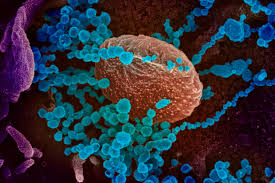Scientists in Australia have discovered strategies used by viruses to control human cells so effectively in spite of having minimal genetic material.
A finding that could lead to new antivirals and vaccines has revealed.
The study revealed how rabies virus manipulates so many cellular processes in spite of being armed with only a few proteins.
This is according to a statement released Thursday by Australia’s Monash University, which co-led the research with several leading Australian research institutes.
The researchers believed that other dangerous viruses like Nipah and Ebola may also work the same way, possibly enabling the development of antivirals or vaccines to block these adaptive tactics.
The study published in Nature Communications has revealed.
Viruses have the ability to “do so much with so little when they infect and take over” our cells.
Rabies virus, for example, has the genetic material to make only five proteins, compared with about 20,000 in a human cell, said the study’s co-senior author Greg Moseley.
Moseley is the head of the Monash Biomedicine Discovery Institute’s Viral Pathogenesis Laboratory.
“Viruses such as rabies can be incredibly lethal because they take control of many aspects of life inside the cells they infect.
“They hijack the machinery that makes proteins, disrupt the ‘postal service’ that sends messages between different parts of the cell, and disable the defenses that normally protect us from infection,” Moseley said.
The study found out that, the rabies virus uses a single multifunctional protein, known as P, to hijack key cell processes.
The protein can change shape and bind to RNA, enabling it to infiltrate liquid-like compartments inside cells that control key processes.
He noted that control key processes such as immune defense and protein production, and turn the cell into a highly efficient virus factory. (Xinhua/NAN)(



